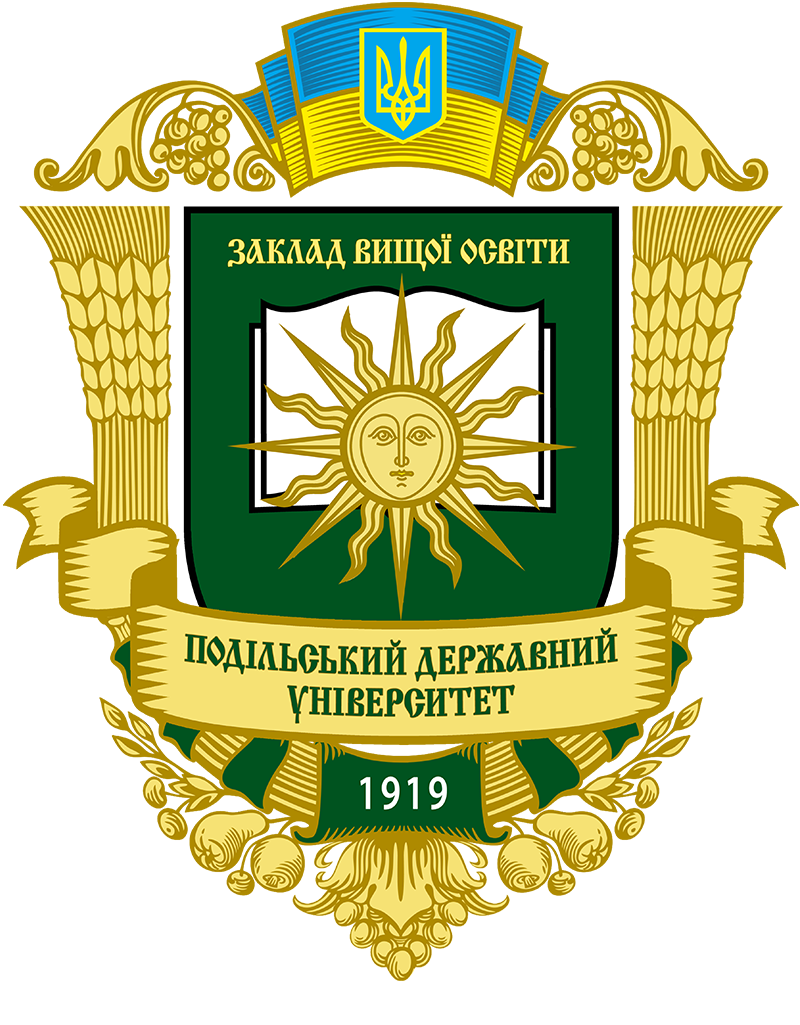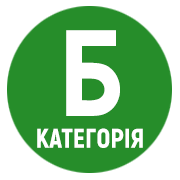ADAPTIVE AND PRODUCTIVE POTENTIAL OF CITRULLUS LANATUS (THUNB.) MATSUM. & NAKAI HYBRIDS IN THE RIGHT-BANK FOREST-STEPPE OF UKRAINE
DOI:
https://doi.org/10.37406/2706-9052-2025-3.16Keywords:
watermelon, fruit weight, yield, adaptability, stability, plasticityAbstract
Under current agroecological conditions, which are increasingly complicated by climate change and soil degradation, there is an urgent need to introduce high-yielding and adaptive vegetable crop varieties. Common watermelon (Citrullus lanatus) is a promising cucurbit crop for cultivation in non-traditional regions, particularly in the Right-Bank Forest-Steppe of Ukraine, where climatic conditions are unstable. The aim of this study was to analyze the adaptive and productive potential of eight modern seedless watermelon hybrids (Trophy st, Tselin, Inception, Talisman, НУН 21613, Topgun, Karistan, and Tamerlan) under drip irrigation during 2023–2024. This study presents the results of a comprehensive evaluation of watermelon hybrids based on key productive traits under Forest-Steppe conditions. The average number of fruits per plant, total number of fruits per hectare, fruit weight, yield, stability, adaptability, plasticity, and breeding value were analyzed. Inception (1,4 fruits/plant) and Tselin (1,25 fruits/plant) formed more fruits than the standard hybrid Trophy (1,3 fruits/plant). Inception produced 12,73 thousand fruits/ha, significantly exceeding the standard. The largest fruit weights were recorded in Tamerlan (9,44 kg), Talisman (8,52 kg), and Karistan (8,22 kg). The highest yields were obtained from Tamerlan, НУН 21613, Karistan, and Talisman. Genetic-statistical analysis confirmed the stability of Tamerlan (σ²d = 1,19; KfsL = 0,95) and the high breeding potential of Talisman, Karistan, and Tamerlan. Trophy, Tselin, Inception, and НУН 21613 were classified as intensive types (bi > 1), while Topgun, Karistan, and Tamerlan were more plastic. Hybrids varied in homeostasis coefficient (530–953), indicating differences in stability. None of the hybrids showed adaptability above 1, suggesting insufficient environmental fitness. The CVG/CVE ratio of 0,70 indicates a limited realization of genotypic potential under local soil and climatic conditions.
References
Кавуни продовольчі свіжі. Технічні умови. ДСТУ 3805-98. Київ : Держспоживстандарт України, 1998. 27 с.
Методика дослідної справи в овочівництві і баштанництві / за ред. Г.Л. Бондаренка, К.І. Яковенка. 3 вид. Харків : Основа, 2001. 370 с.
Семенченко О.Л., Мельник О.В., Заверталюк В.Ф., Пастухов В.І. Вплив ущільнення посівів кабачка та кавуна на врожайність плодів в умовах Північного Степу України. Таврійський науковий вісник. 2021. № 121. С. 102–108. DOI: 10.32851/2226-0099.2021.121.14.
Сергієнко О.В., Шабетя О.М., Ліннік З.П., Сергієнко М.Б., Повлін І.Е. Добір вихідного матеріалу кавуна за адаптивністю для селекції на придатність до вирощування за інтенсивної та органічної технологій. Селекція і насінництво. 2023. № 124. С. 45–55. DOI: 10.30835/2413-7510.2023.293879.
Burton G.W., De Vane R.W. Estimating heritability in tall Fescue (Festuca arundinacea) from replicated clonal material. Agronomy Journal. 1953. Vol. 45. P. 478–481. DOI: 10.2134/agronj1953.00021962004500100005x.
Eberhart S.A., Russell W. A. Stability parameters for comparing varieties. Crop Science. 1966. Vol. 6. № 1. P. 36–40. DOI: 10.2135/cropsci1966.0011183X000600010011x.
Finlay K.W., Wilkinson G.N. The analysis of adaptation in a plant breeding program. Australian Journal of Agricultural Research. 1963. Vol. 14. P. 742–754. URL: https://pdf.usaid.gov/pdf_docs/PNAAS139.pdf.
Mohosina F., Mehedi Md., Mahmud E., Hasan M., Noor M.M., Rahman Md.H., Chowdhury A. Genetic diversity of commercially cultivated watermelon (Citrullus lanatus) hybrids in Bangladesh. SABRAO Journal of Breeding and Genetics. 2020. Vol. 52. P. 418–434.
Ngwepe R.M., Mashilo J., Shimelis H. Progress in genetic improvement of citron watermelon (Citrullus lanatus var. citroides) : a review. Genetic Resources and Crop Evolution. 2019. Vol. 66. P. 735–758. DOI: 10.1007/s10722-018-0724-4.
Ren K., Tang T., Kong W., Su Y., Wang Y., Cheng H., Yang Y., Zhao X. Response of watermelon to drought stress and its drought-resistance evaluation. Plants. 2025. Vol. 14. № 9. Article 1289. DOI: 10.3390/plants14091289.
Serhienko O., Shabetia O., Linnik Z., Serhiienko M., Melnyk O. Selection of highly adaptive source material of watermelon for selection for early ripening. Scientific Horizons. 2023. Vol. 26. № 8. P. 42–51. DOI: 10.48077/scihor8.2023.42.
Shabetia O., Serhienko O., Mohilnaia E., Kondratenko S., Morhun L. Expansion of the genotypic variability in watermelon by physical mutagenesis. Plant Breeding and Seed Production. 2021. P. 44–52. DOI: 10.30835/2413-7510.2021.237001.
Shing M., Ceccarelli S., Hambling J. Estimation of heritability from varietal trials data. Theoretical and Applied Genetics. 1993. Vol. 86. № 4. P. 437–441. DOI: 10.1007/BF00838558.
Wahyudi A., Nazirwan I., Kartahadimaja J., Setyawan A.B., Mustakim N.A., Askhary F., Katfar B. Evaluation of yields on new varieties of hybrid watermelon. IOP Conference Series Earth and Environmental Science. 2022. Vol. 1012. Article 012070. DOI: 10.1088/1755-1315/1012/1/012070.
Wijesinghe E., Evans L., Kirkland L., Rader R. A global review of watermelon pollination biology and ecology: the increasing importance of seedless cultivars. Scientia Horticulturae. 2020. Vol. 271. Article 109493. DOI: 10.1016/j.scienta.2020.109493.
Yankova P., Koleva M. Influence of two farming systems on the productivity of watermelon. Annals of the University of Craiova Agriculture Montanology Cadastre Series. 2025. Vol. 54. P. 317–328. DOI: 10.52846/aamc.v54i1.1588.
Yatsenko V., Yatsenko N., Mostoviak I., Lazariev O., Zhilyak I., Novak Y., Kravchenko V., Musiienko L., Krykun S. Influence of the weather conditions on the efficiency of absorbents in the vegetable crop rotation system and on the stock of productive soil moisture. Acta Fytotechnica et Zootechnica. 2024. Vol. 27. № 3. P. 250–265. DOI: 10.15414/afz.2024.27.03.250-265.
Yatsenko V., Yatsenko N., Poltoretskyi S., Mostoviak I., Poltoretska N., Lazariev O., Liubych V. Adaptiveness selection and nutritional value of clonal populations of Allium sativum L. ssp. sativum in the forest steppe of Ukraine. Acta Agriculturae Slovenica. 2025. Vol. 121. № 1. P. 1–12. DOI: 10.14720/aas.2025.121.1.12524.











